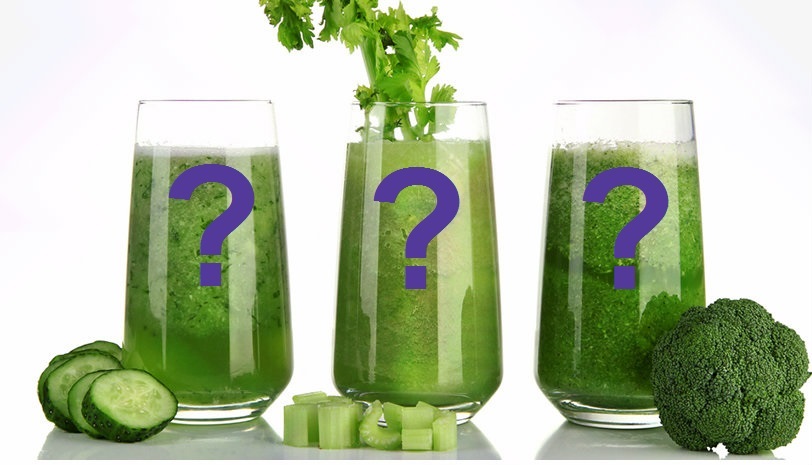
Trends keep life interesting. It’s always fun to see what sticks, and what fades away. Some recent trends garnering excitement include:
1. Juicing — not like apple or grape, but really green juice that looks like you scraped it off of a fish tank. I’ve heard if you start juicing, you will become totally awesome, 10 years younger, and gain IQ points.
2. Buzzfeed quizzes — which 80′s rock star are you? Which city are you? Which font are you?! Comic Sans! Yay!…Um, just kidding.
3. Frozen (that song).
4. Game of Thrones — channeling Daenerys Targaryen in meetings just feels good.
If you’re in marketing, a “trend” you’ve probably heard about is marketing automation. Like many things, it sounds like a good idea, but deep down you might wonder: what does it really do, other than send emails? What if it’s a trend, like juicing? Maybe it will pass, and you’ll go back to eating buttered toast.
So in a nutshell, what does marketing automation do, and why should you care? I first purchased marketing automation (Marketo, specifically) while working at an another company several years ago. Since then, automation has become essential for me as a marketer — it’s not a trend anymore, it’s a staple. Here’s why:
Why Marketing Automation is More than a Trend
1. Scalability – Whether you are a startup company with a marketing team of one, or a larger enterprise, you always want to optimize your efficiency. Using Marketo, you can clone whole programs (email, landing pages, etc.) so your team is not setting up programs from scratch each time. It’s like copying and pasting. This capability never gets old.
2. Reporting – I have never worked for an organization that didn’t care about return on marketing investment. Closed-end reporting was the main reason I investigated marketing automation in the first place. In my current role, I use Marketo daily to evaluate marketing programs and their performance.
Some of the program metrics I look at are: # of new names, investment/name, and # of qualified leads (demographics + behavior). I also look at which content assets perform best per program or channel. I check out first touch and multi-touch pipeline-to-cost, so I know which programs and channels are best for creating pipeline for the respective investment. Using Marketo, I can pull this data easily. This means that I can quickly change the course of a program, or if I have extra money, I can make an informed decision about where to invest.
3. Alignment with my sales team – I run campaigns to help my sales team. With marketing automation, I greatly improve the likelihood of providing qualified leads at the right time to my sales organization. I have the ability to use lead scoring (put simply, lead scoring assigns points based on desired demographics and behaviors). With scoring, a rep can easily log into their CRM and sort leads based on score. At my last company, I selected Marketo because of its #1 rating on the SFDC AppExchange (best API integration) and (again) how effectively I could measure campaigns and channels.
4. Communicating in a personal way – No one likes receiving email that seems impersonal, ill-timed, or just completely irrelevant. As marketers, we all understand that concept — but acting on it can be a lot more challenging. Using marketing automation, you can use behavioral filters to target your audience or trigger messages based on behavior.
Through Marketo’s nurturing capabilities, I can also easily schedule content to activate or deactivate (for example, I don’t want people to receive an analyst report that’s more than a year old, so I can set an end date for that asset). Marketo allows me to communicate in a personal way.
5. Running programs across multiple channels – Lastly, many of us are using multiple channels to communicate with our audiences. The trick is coordinating (with consistent messaging and experiences) and measuring these efforts. With Marketo, I have the ability to run a multi-channel campaign (for example, I could run social, email, web, and direct mail programs, all within the platform) and I can measure each channel, but then I can also measure the entire effort.
To give you a recent example, our annual summer roadshows have a lot of moving parts. Using marketing automation, I can scale a sophisticated program that involves multi-channel elements on email, social, and direct mail. I can easily 1) set up the entire program quickly, and 2) ask critical questions, which are immediately addressed. I also can quickly review all of the different channels and make sure our message and style is consistent, without logging into multiple applications.
I know most of you are busy, so I hope my perspective helps you understand why marketing automation can help your business — it can do a lot more then “send emails”. If you’re interested in learning more about marketing automation, our Definitive Guide to Marketing Automation is a good place to start.
Several months from now, we may not be drinking green juice or watching Game of Thrones, but I for one will still be using marketing automation (while eating locally sourced kale chips).
By: Related Resources
